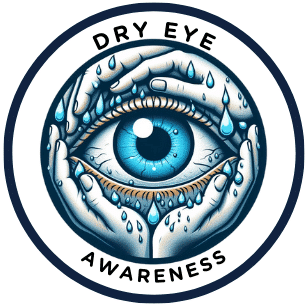
Dry Eye Syndrome is much more than just an occasional nuisance; it’s a condition that affects millions globally. I break down what it is: typically, it’s when your eyes don’t produce enough tears or the tears evaporate too quickly. This often leads to discomfort and, in severe cases, can cause vision problems.
The symptoms you might experience are varied. Imagine feeling a stinging or burning sensation in your eyes, having sensitive eyes, or when your vision momentarily blurs and then clears. It’s these kinds of signs that can signal Dry Eye Syndrome.
Why does it happen? Several factors are to blame. It could be due to aging, or because you’re looking at screens for too long without breaks. Even certain medications or medical conditions could be culprits.
It’s clear that Dry Eye Syndrome can be a real hindrance. Imagine struggling with tasks that require visual focus, like reading or driving. That’s the everyday reality for many people with this condition.
Recognizing the Symptoms: When to Seek Help
If you’ve ever felt a gritty, burning sensation in your eyes, you’re not alone. But when do these irritations signal something more, like Dry Eye Syndrome (DES)? Understanding when to seek medical advice is essential. Dry Eye Syndrome isn’t just an annoyance; it can develop into more serious eye problems if left unchecked.
Dry Eye Syndrome often manifests through persistent dryness, scratchiness, or a feeling as if something is in your eye. Some people may also experience redness and sensitivity to light. If these symptoms don’t resolve with basic self-care, such as taking frequent screen breaks or using over-the-counter eye drops, it might be more than just fatigue or minor irritation.
The challenge is distinguishing between the occasional discomfort that comes from a long day or environmental factors and the persistent symptoms characteristic of DES. If symptoms persist daily for more than a week, or if they affect your ability to perform everyday tasks, it’s time to consult a healthcare professional.
An optometrist or ophthalmologist determine whether you have Dry Eye Syndrome. Optometrists specialize in vision care and can manage and treat most cases of DES.
The Diagnostic Process: Expert Approaches and Tests
A proper diagnosis of Dry Eye Syndrome hinges on a thorough examination by a eye care professional. It’s not something you can self-diagnose with certainty, as the symptoms can resemble other eye conditions. If you’re experiencing persistent dryness, irritation, or fatigue in your eyes, it’s crucial to set up an appointment with an eye care specialist.
During your visit, expect to discuss your medical history in detail. Your doctor will want to hear about any underlying health issues, medications you’re taking, and your lifestyle, as these can all influence eye health. They’ll specifically ask about your symptoms, how often they occur, and whether any activities or environments seem to trigger them.
The examination typically involves a series of tests to assess both the quantity and quality of your tears. For this, your doctor might use what’s known as the Schirmer test, which measures the amount of tear production by placing a small strip of filter paper under your lower eyelid. Another test that I like to use on my patients is the Phenol Red test. This involves placing a small yellow thread inside the bottom eyelid for 10 seconds. As your tears absorb into the string the string turns red. I then measure the distance your tears absorbed into the string and if it is less than 10mm then that means you have a deficiency in the aqueous portion of your tears. I prefer this test as compared to the Schirmer test because it is more comfortable to my patients. There are three layers to your tears: a mucous layer, aqueous or watery layer, and then an oil layer on top of that. DES can be caused by a deficiency in any of these three layers and I do tests to determine which layer your DES is coming from. I use special dyes to see how tears spread over your eye, how long they take to evaporate, and if the eye surface has been damaged or devitalized in any way.
Once a comprehensive diagnosis is made, your eye doctor can fine tune an appropriate treatment plan to your specific needs. The next section will cover the treatments available and how implementing certain lifestyle changes can support your eye health, helping you to live comfortably with Dry Eye Syndrome.
Living with Dry Eye Syndrome: Management and Treatment Options
I understand dealing with Dry Eye Syndrome (DES) can be frustrating. It can blur your vision, create discomfort, and disrupt your daily activities. Here’s the good news: with the right approach, you can manage it effectively.
First, consider simple lifestyle changes. If you spend hours in front of a screen, take frequent breaks to rest your eyes. Stay hydrated and increase the humidity in your workspace. Small steps like these can make a big difference.
Over-the-counter options are readily available. Artificial tears are a go-to solution for many, providing temporary relief. Remember, not all eye drops are the same, so finding the right one for your eyes is important.
If symptoms persist, your doctor might suggest prescription treatments. These could range from anti-inflammatory drops, to punctal plugs that help retain moisture. Trust your eye care provider to guide you through these options.
Ongoing care is KEY. Regular check-ups ensure your treatment plan stays on track and adjusts to your needs. Living with Dry Eye Syndrome is challenging, but remember, you’re not alone in this. Effective management is possible with the right knowledge and consistent care.

